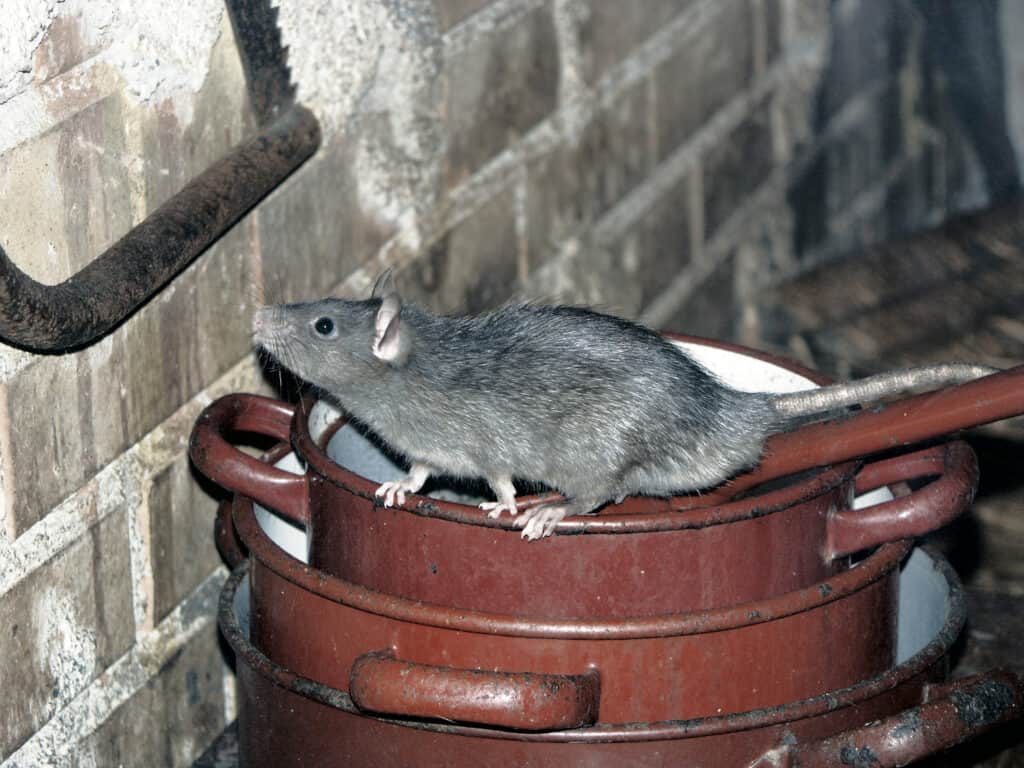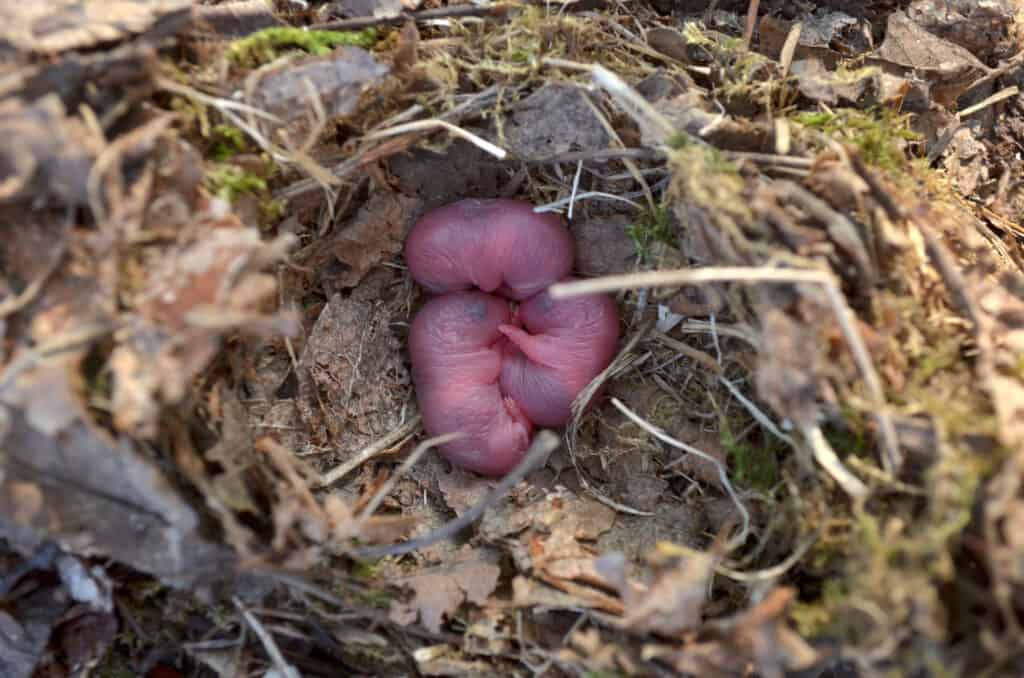No matter the time of year, rats love entering homes to seek food and shelter. Many people who have experienced rats in their homes work at sealing all entrances. But, despite their efforts, the rats return, occupying their homes or roof spaces. What people neglect to do is to seal openings and holes in their roof spaces and attics. And because rats can climb walls, they enter the house from these vantage points.
Can Rats Climb Walls?

Rats are excellent at climbing rough walls made of brick, stone, wood, and other materials where they can get a good grip.
©iStock.com/PeterHermesFurian
Rats are agile and can scale walls, depending on their surface. If the wall has a rough texture and space to grip, a rat can climb the wall. Examples of walls that rats can climb include those made of brick, stone, and wood, to name a few.
Rats cannot climb walls that have a smooth surface. Walls made of tiles, polished glass, and even some plastics do not offer rats the necessary grip, so they will slide down the wall.
Climbing Ability Of Rats
Rats are strong climbers that have used this ability to survive and thrive for centuries. One of the many reasons that rats flourish on every continent except Antarctica is their climbing abilities. Rats climbed onto ships and colonized continents the same way European colonizers did.
Rats’ claws and pads on their digits help them to grab and stay on surfaces. Their nails are sharp, and they also have microscopic dermal ridges that help them grip a vertical surface. Rodents use their tails for balance or support when wrapping around cords, chains, or ropes. These animals can also jump and leap far distances vertically to 36 inches and horizontally as far as 48 inches.
University of Nebraska researchers found that rats can scale walls made from specific materials. These materials are concrete, brick, wood, sheet metal, plastic, stucco, and drywall. Although all rats are good climbers, some are better than others. For example, the black rat, also known as the roof rat, is known for climbing and nesting in elevated spaces, like roofs and lofts. Another rat subspecies good at climbing is the brown rat, also known as the Norway rat.
What Else Can Rats Climb?

Rats often climb trees to find food, like fruits or eggs in a bird’s nest.
©iStock.com/Nigel Harris
Rats do not only use their climbing abilities to scale walls but also climb:
- Trees: The trunk of a tree is textured and has a lot of grips that rats can use to climb easily. Rats often climb trees to find food, like fruits or eggs in a bird’s nest. Some rats will climb a tree and then jump off it onto a roof of a house or building. Roof rats are known to do this as they build their nests in these spaces.
- Gutters: Gutters also often have enough grip for rats to climb. As a result, they will climb gutters, either outside or inside, to get inside a home or building. To stop rats from climbing through your gutters and entering your home, you could place a piece of chicken wire at its base to prevent entry.
- Drainpipes: If rats can get inside drainpipes, they can climb and enter a home or building. Not only will these animals use drainpipes as an entry point, but they damage them through gnawing. This gnawing causes leaks in your home’s plumbing, and rats can also contaminate your drinking water in this way. You could close all the openings with drain valves to stop rats from entering a building via the drainpipe.
- Fences: Fences are easy to climb as they have loads of surface texture, with many featuring a ladder design. If you want to prevent rats from scaling your fences, we suggest installing an electric fence.
What To Do When Finding a Rat’s Nest

Rats are known to carry and spread diseases to people and other animals.
©iStock.com/Julia Bilousova
If you notice a rat nest in your home or garden, you should take immediate steps to remove it. Rats are known to carry and spread diseases to people and other animals. So, if you find a rat’s nest close to where you work or live, you have several options.
Pest control or DIY?
You can contact pest control or deal with the problem yourself. Pest control may be costly in the short term, so you may want to manage the problem yourself. If you choose the DIY option, you can install rat traps. You can buy traps that capture the rat without harming them or choose the deadly option. These traps use a CO2-powered shot that instantly kills the rat.
Where to look for nests
Rats love building their nests in urban and suburban areas close to food, water sources, and shelter. Rodents mostly make their nests from natural materials, like sticks and twigs. But these animals also like using artificial materials to build nests, like garbage, cotton, and shredded paper. So you are most likely to find a rat’s nest under your home’s porch, attic, close to plumbing, between the walls, and in crawlspaces.
Telltale signs of rat nests
If you are unsure whether rats may live in your home, there are telltale signs to alert you to an invasion. For example, a rat’s nest may be nearby if you see droppings. If you notice burrows on your property or see rat tracks around your garden or home, these are also unmistakable signs that you have unwanted visitors sharing your space. You may also hear noises on the roof or in the walls, notice property damage, or see small smear marks on the walls from rats hugging them as they move around. All these are signs that you need to take action to remove the rats from your environment.
Size of Rats

Norway rats grow to 16 inches long once they are adults.
©JaklZdenek/Shutterstock.com
Depending on the rat subspecies, rats range in size. For example, Norway rats grow to 16 inches long once they are adults. Another example is the roof rat, which can reach an average adult size of 13 to 15 inches long. Generally, male rats are larger than female rats. Therefore, if you have holes or small gaps that allow rats access to your home, it is advisable to take steps to prevent their entry.
The photo featured at the top of this post is © iStock.com/Moment of Perception Photography
Thank you for reading! Have some feedback for us? Contact the AZ Animals editorial team.






